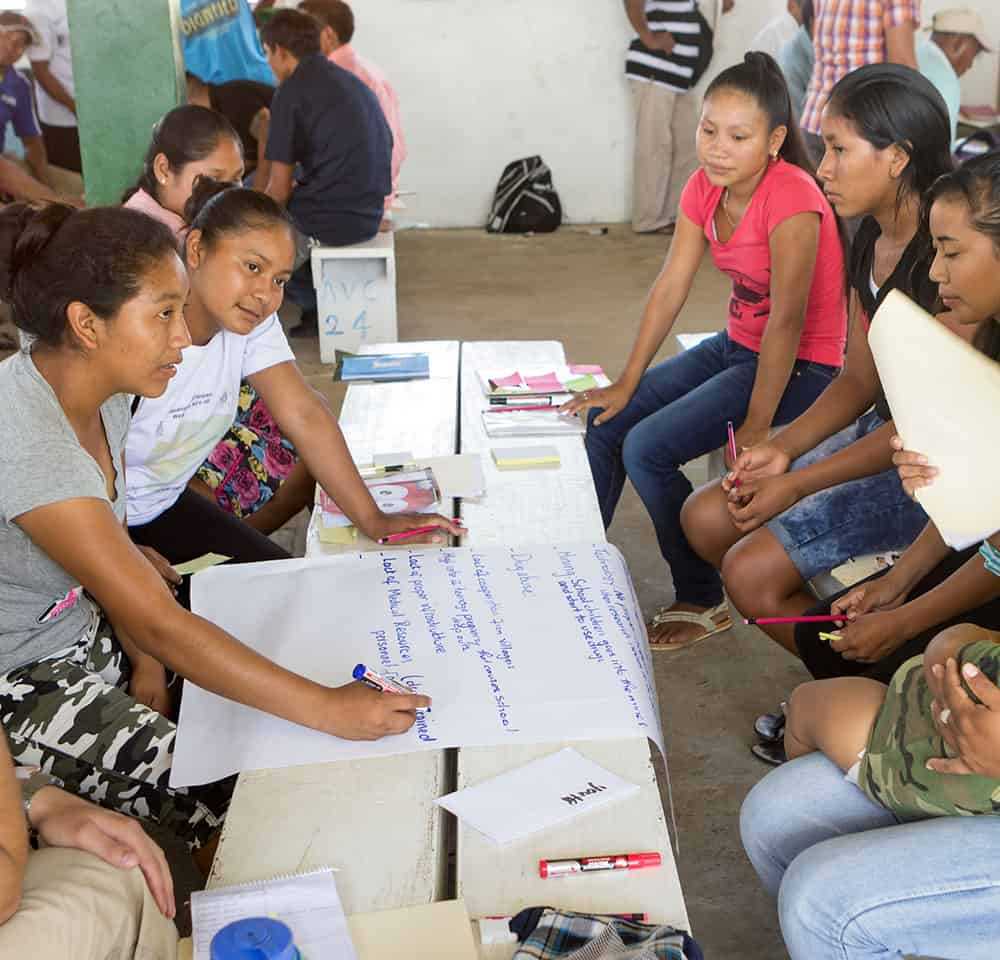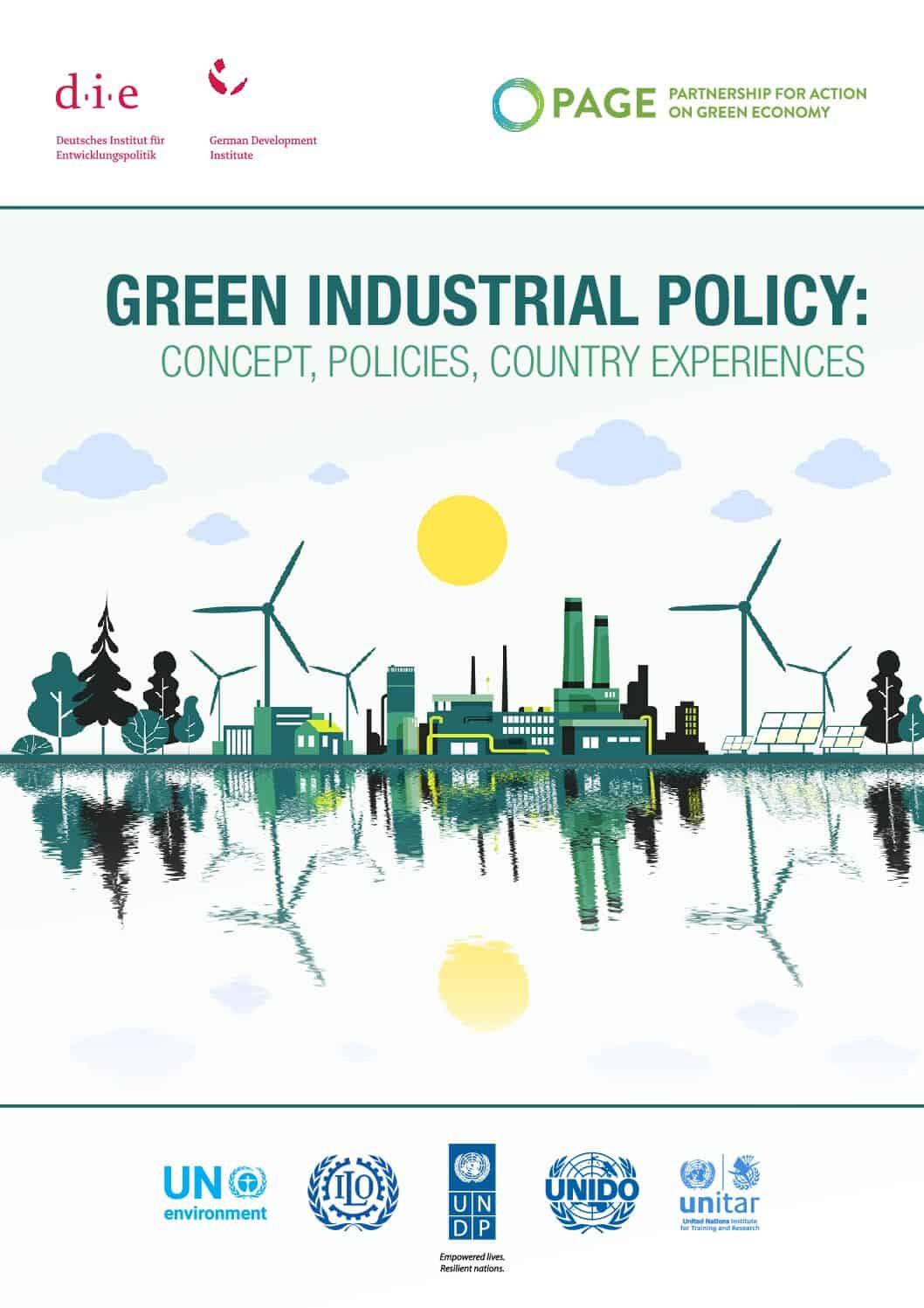Responding to Country Needs

Table of Contents
Country Support Package
PAGE tools & services are tailored to the unique starting points, needs and circumstances of each partner country to help develop its own pathway to green recovery, circularity and an inclusive green economy. Synchronizing short-term rescue efforts with long-term economic planning, and aligning them with global sustainability commitments is necessary to address the root causes of environmental degradation and social inequalities.
PAGE has emerged as an innovative model of inter-agency cooperation for other UN initiatives that seek to deliver as one. The partnership offers a comprehensive, coordinated and cost-effective package of economic and scientific analytical tools, technical assistance for policy development, and capacity building services for policy implementation.
Countries join PAGE through a criteria-based selection process, which has become a competitive process. Country support is time-bound and results-oriented and subject to commitments of interested governments and stakeholders. PAGE has a track record of providing demand-driven policy and capacity-building support helping countries move towards circularity and a green economy.

Tools for policymakers
PAGE helps countries, through integrated technical advice, analysis and capacity building, to embark on a whole-economy and whole-society transition to an inclusive green economy.
To inform policymakers, researchers and practitioners, PAGE has developed tools and publication to provide countries with practical guidance on how to formulate and assess policies, measure progress and model future effects of the transition.
![]()
Country Starter Kit
The Green Economy Toolkit for Policymakers or country starter kit provides countries with practical guidance on how to formulate and assess policies, measure progress and model future effects of the transition.
The toolkit consists of three reports: the guidance manual for green economy policy assessment, the guidance manual for green economy indicators and the report on using models for green economy policymaking.
![]()
Green Industrial Policy Trilogy
PAGE developed a series of publication on Green Industrial Policy or “Green Industrial Policy Trilogy” to provide guidance to policymakers and green economy professionals in the use of policy options, so they can be a driver for a green economy transformation and highlight the social, environmental and economic co-benefits of green industrial policy.
Green Industrial Policy: Concept, Policies, Country Experiences
- Green Industrial Policy: Concept, Policies, Country Experiences
- Green Industrial Policy – video explainer
The “Green Industrial Policy: Concept, Policies, Country Experiences” report illustrates how green industrial policy can be a driver for a green economy transformation and highlights the social, environmental and economic co-benefits of green industrial policy.
The report addresses policymakers, advisors, researchers and practitioners and makes a case for accelerating structural change toward a Green Economy in developing and developed countries alike. It gives a detailed overview of different policies and instruments for green industrial policy. These include market-based mechanisms, such as environmental taxes, tradable permits, and subsidies, and regulatory instruments.
The publication also provides advice on how to overcome political deadlocks that might challenge the implementation of green industrial policy: it calls for a sequenced approach and pilot-testing when introducing industrial policy, coalition building and stakeholder involvement in the transformational change, and control mechanisms to monitor and evaluate the policy implementation.
The “Green Industrial Policy: Concept, Policies, Country Experiences” report is a joint publication by UNEP and the German Development Institute/Deutsches Institut für Entwicklungspolitik (DIE).
Green Industrial Policy Toolbox
PAGE developed the Green Industrial Policy and Trade tool-box to guide policymakers and green economy professionals in the use of policy options at the intersection of green industrial policy and trade. As such, this tool-box provides an overview over trade-related green industrial policy instruments available and clarifies their structure and operation, while outlining their implications with regard to trade policy. The tools are embedded in an overall methodology consistent with the Practitioner’s Guide to Strategic Green Industrial Policy.
This tool-box is targeted at national policy makers concerned with industrial, trade or environmental policies, as well as negotiators of trade and investment agreements that are looking to employ trade-related green industrial policy tools to facilitate their country’s transition to an Inclusive Green Economy. It focuses on a sub-set of green industrial policies. These comprise of trade policies that can be harnessed to promote green industries and green industrial policies that are of particular relevance from an international trade perspective.
The publication therefore discusses the following tools: Border measures, Support schemes (ch.3), Standards (ch.4), Sustainable public procurement and manufacturing (ch. 5), and Provisions in trade agreements reserving or promoting green industrial policy (ch.6) and Employment-related schemes (ch.7).
Practitioner’s Guide to Strategic Green Industrial Policy
The Practitioner’s Guide provides practical advice on the evolving concept of Strategic Green Industrial Policy for policy practitioners. As such it describes a methodology and tools required for the planning and implementation of a green industrial policy strategy along the various stages of the policy cycle. This is founded on the understanding that any transformation of a country’s industrial sectors has to be based on a holistic and coherent strategy, aimed at an overall transformation of markets and consumer behaviour.
The guide draws on tools and methodologies from disciplines such as industrial ecology and ecological economics, with other tools rooted in systems thinking, theory of change, and other fields of research and practice. Some of these tools may be relatively under-explored territory for some industrial policymakers. And indeed, some of the changes required for a transition to a green economy imply significant restructuring (if not disruption of technological paths). However, this guide aims to ease this transition by providing detailed guidance, highlighting a number of changes that are relatively easy to implement.
The Supplement to the Guide provides a more detailed overview on the variety of policy tools that can be applied by policymakers in the respective phases of the policy circle.
![]()
Green Jobs Assessment Guidebook
The International Labour Organization’s (ILO) activities within PAGE focus on green jobs and ensuring a just transition as countries commit to greening their economies.
This training guidebook can be introduced into national teaching institutions that would serve as regional-hubs supported by ILO and GAIN trainers.
Green Industrial Policy Trilogy
 pdf
pdfGreen Industrial Policy: Concept, Policies, Country Experiences
2017![Preview of Video – Green Industrial Policy. Concept, Policies, Country Experiences]()
Video – Green Industrial Policy. Concept, Policies, Country Experiences
2017 pdf
pdfGreen Industrial Policy and Trade: A Tool-Box
2017 pdf
pdfPractitioner’s guide to strategic Green Industrial Policy
2016 pdf
pdfPractitioner’s guide to Green Industrial Policy – supplement
2016
Green job Assessment Guidebook
You may be interested in
Responding to Global Challenges
To support policymakers globally, PAGE develops and disseminate new analytical tools, capacity-building modules and courses, and cutting-edge knowledge products on inclusive green economy.
Knowledge Hub
PAGE supports countries to improve their Inclusive Green Economy (IGE) knowledge base by generating and sharing knowledge products such as manuals, reports, lessons learned and best practices to inform and support national policy analysis and formulation.
Uniting the UN system
PAGE is the pioneer to support offices of UN Resident Coordinators around the world to deliver tailored support to countries, enable cross-fertilization, and leverage the UN System for green economic transformation.








